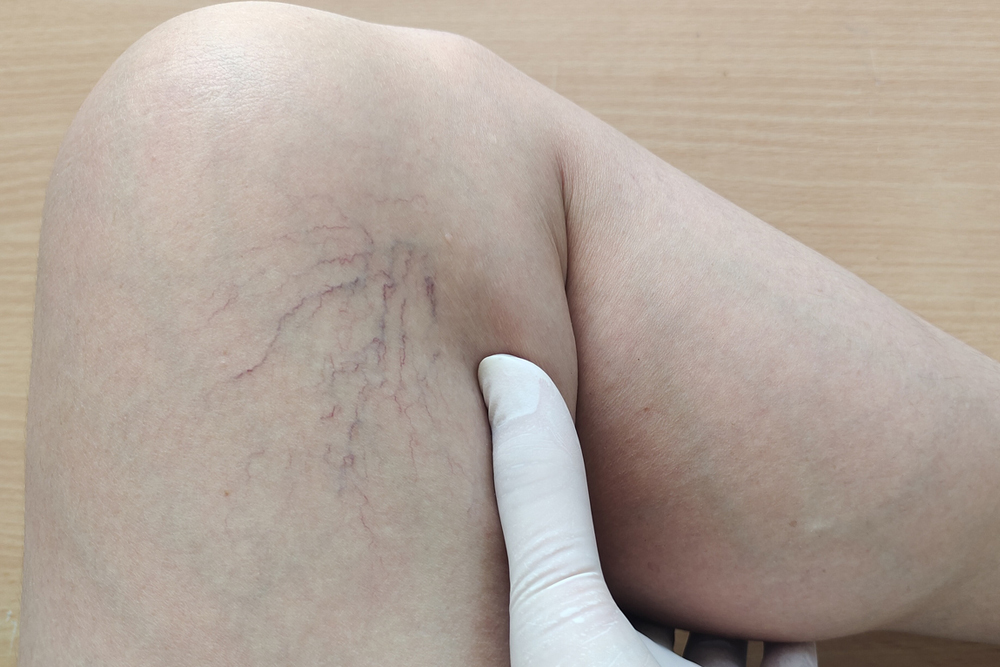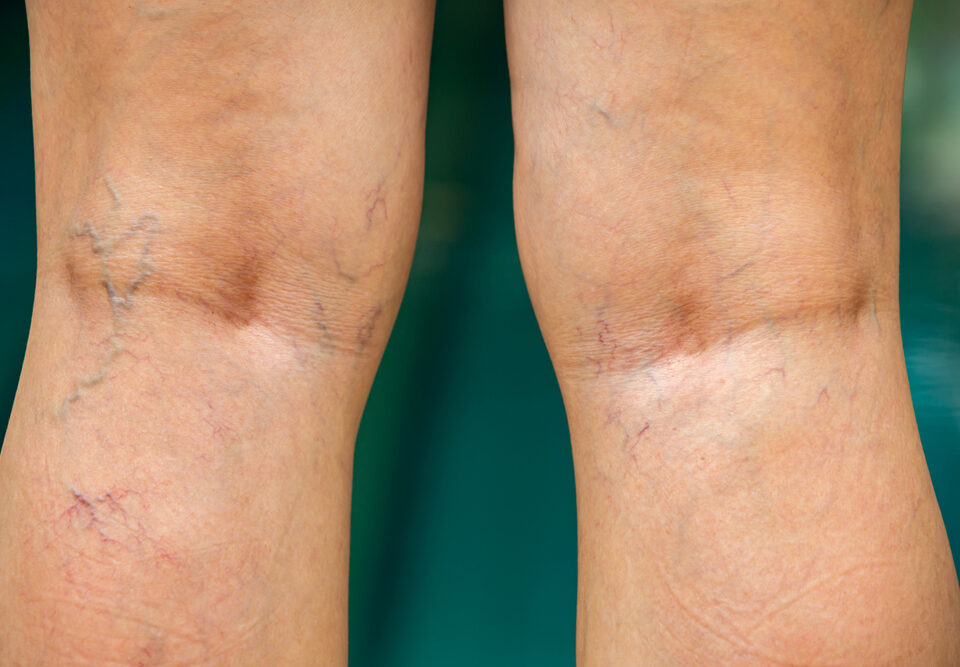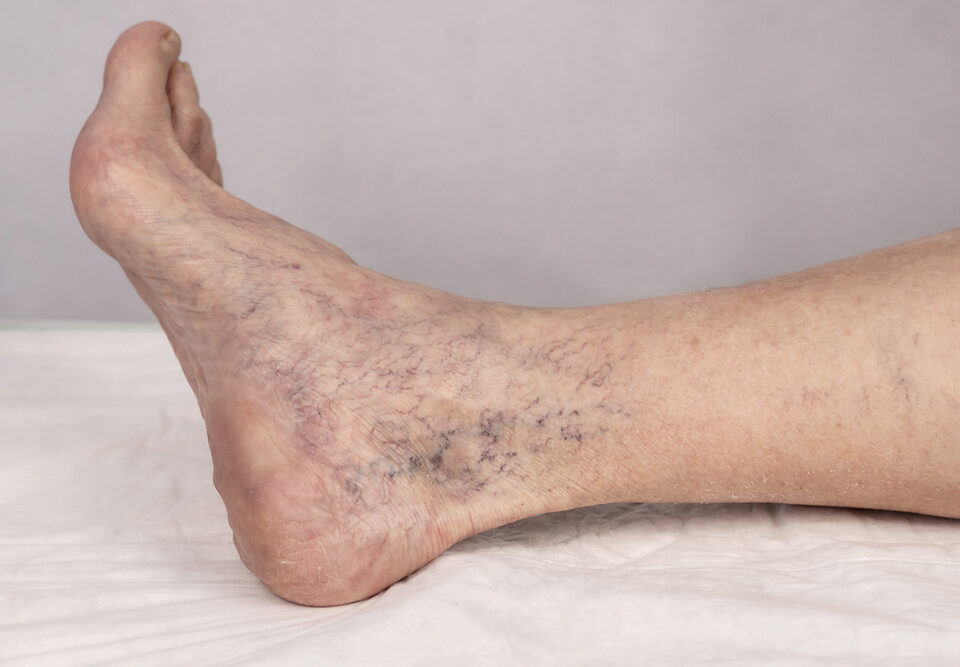Varicose veins – those bulgy, enlarged veins typically found in the ankles and legs – may not only appear unsightly, they actually can impact your health. Their gnarled and discolored appearance seen through the skin means the valves in your veins are failing or unable to keep the blood moving forward, making it increasingly difficult for the blood to flow freely to the heart. This causes the blood to pool in the veins themselves, hence the bulges and discoloration. While genetics, age and gender do play into the risk factors involved in developing varicose veins, you can reduce your risk or decrease your veins’ severity by doing the following –
Get Moving
Staying seated for long periods of time can constrict blood flow, whereas standing for extended periods can cause the pressure in your veins to increase. Bottom line: both standing and sitting too long impacts your circulation. Remedy this by moving as much as you can to decrease pressure on your veins, whether it is taking a break from sitting, having a peddling machine under your desk or, if you stand, marching in place when you can – anything to get that blood flowing.
Elevate your Legs
Even those who are on the move all day need to rest their veins. When you get home or can take a break, elevate your legs for 10 to 15 minutes to prevent the blood from pooling and your ankles from swelling.
Increase your Exercise Regime
Moving around throughout the day is great, but it’s exercise that gets your heart pumping and blood flowing; exercise also increases the amount of oxygen being drawn into your lungs. Be sure to stretch before running or performing other exercises to prevent cramping and to help tone and strengthen the ankles, feet and legs. To avoid excess pressure on your legs and ankles, try a low-impact exercise, yoga or swimming.
Maintain a Healthy Weight
The more weight you carry, the harder your veins work to pump that blood. Plus, a healthy weight can help your blood pressure remain healthy, which is beneficial not only for your cardiovascular health, but your musculoskeletal health as well. Plus, keeping trim and getting rid of excess weight reduces pressure on your lower extremities.
Wear compression stockings
Never underestimate the benefits of wearing compression stockings, which can help prevent the blood from pooling in your lower extremities. Before investing in compression hose, talk to your vascular specialist to ensure you are wearing the right kind for you; you don’t want them too loose or tight. Depending on your condition, your doctor may advise you wear them more often than not, or only when you are at risk, such as during long seated trips.
Eat Right
It’s great to maintain a healthy weight, but if you aren’t eating right, you leave yourself vulnerable for varicose veins. Be sure to avoid processed foods, sugar, and sodium. Foods such as oily fish, leafy vegetables, nuts, whole grains, tomatoes, beets, ginger, turmeric, onions, cherries and berries – are known for their anti-inflammatory properties and can help reduce swelling and pain. Not to mention, they often are very low in calories and high in fiber, which is perfect to keep varicose veins at bay.
Varicose Veins Treatment in Florida
Varicose veins can result in increased pain and swelling, weakness, ulcers and, if left untreated, potentially deadly diseases like deep vein thrombosis, blood clots and lipodermosclerosis. If you are at risk of developing or have been diagnosed with varicose veins, don’t put off seeing a specialist. At Premier Vein & Vascular, we specialize in the treatment of vein and vascular conditions, to include varicose and spider veins, as well as diabetes, stroke and poor circulation. Don’t wait another day, call Premier Vein & Vascular at 1-888-VEINCARE or request an appointment online in either our Tampa or Largo locations by for a lifetime of vein and vascular health.





